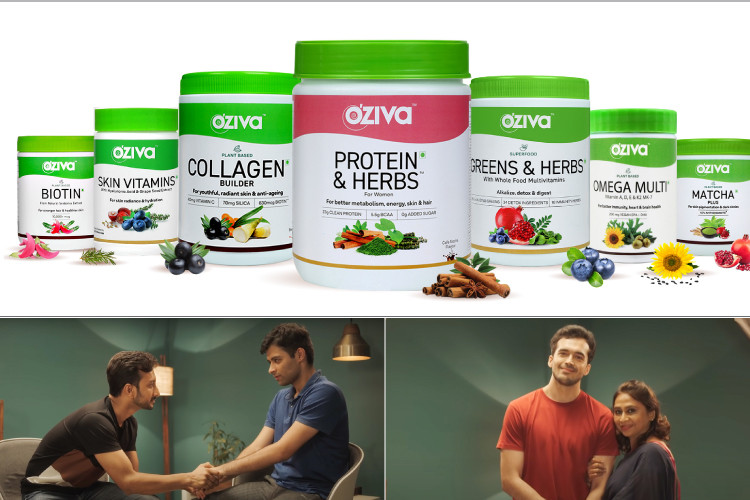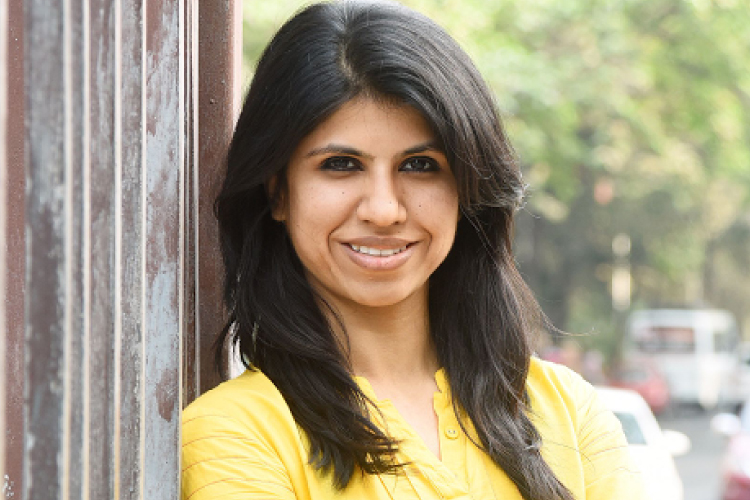Q] What were the insights behind the campaign #BeYourOwnMan focusing on men’s mental health?
When we were doing our research it emerged how difficult it is for men to talk about their health issues. While we all believe that if you wish to live healthy you need to prioritize all three - mind, body, and soul. Having said that, one of the things that came up was how it is still a stigma to talk about mental health issues in the country. Our survey revealed that people don’t like to share or feel comfortable talking about mental health issues because that is how the society has set up the norms. We wanted to ensure that India starts speaking about it.
Q] Looking at the growth numbers, where would you like to see Oziva 5 years from now?
In the last two years, we predominantly grew to 4X in the initial year. We are targeting between 70%-100% growth year-on-year, because the scale is very different. We’ll be okay with up to 2X growth every year. We’re one of the leading players in the digital consumer health space. We started speaking about nutri-cosmetics, that it’s not just about using shampoo on your hair or applying something on the skin, but also about the nutrition required for your skin health or hair health. We would like to take this to the public market, ideally. Predominantly, in the next four or five years, the goal is to take Oziva to a level where it becomes a 1000 crore plus brand company with a mix of two or three brands with different kinds of positioning within the consumer health space. And I think Oziva is and would be the largest player in that entire portfolio.
Q] The digital health space is growing more cluttered. Don’t you see the competition eventually slowing down your growth?
See, the market is huge, which gets us excited. We have this definition called a proactive consumer, which is our TG. There are at least 10 million people who are proactive consumers and have understood the importance of being healthier. That means that they need different solutions. This allows multiple brands or companies to co-exist. And people choose one brand over the other based on certain things, whether they believe in their ethos, product and whether they like the products. The competition will come and sometimes it is very healthy.
Q] How have you tested the effectiveness of the products?
One of the things that I would like to speak about is R&D. So we have around a 12-15 member R&D team, which has food technologists, scientists, nutritionists, biotechnologists, and people working as botanical extracts. We check for efficacy of dosages, we work with FSI, Ayush. We have done clinical studies and RWEs(Real-world evidence) on certain products. For example, we’ve derived calcium from a plant source versus a synthetic source. It is something that has 2x more absorption as compared to regular calcium out there. We are India’s first certified clean nutrition brand, the products or the entire supply chain goes tested for around 300 contaminants that could be present in them. Those are the two investments, one is the supply chain, where we ensure it’s certified clean, or certified vegan, and the second thing is around the efficacy of the products.
Q] How do you cost your products in comparison to some other plant-based branded products selling under the same category as yours which are steeply-priced?
If we compare it with Amway where the channel of selling is predominantly multi-level marketing, we are at a 20%, 30% premium. I don’t need to keep a very strong middle layer margin structure. I think that’s where we look at how a D2C (our model) can help us . For example, our organic plant protein is almost 60% of their pricing, which is great, because I don’t think you need to keep all those margins to yourself. So, whenever we launch products, we do the competitor analysis. Also, it affects the cost if we import certain ingredients verses sourcing them from India.
Q] Are you also looking at exporting shortly?
Yes, we are because there was demand in the U.S. and Canada. We would be launching in the U.S. market, the process has already started. I think in two months we will be available in the U.S. and Canada.
Q] Being a D2C player, you advertise only digitally, right?
Interestingly we tried a lot of things in the last year, right from Digital to TV activations. We realised that some of the activities that we did on TV gave us far more brand upliftment or awareness, as compared to some of the digital activities that we had done. I think the media mix strategy can change from brand to brand, based on the product portfolio. And every brand should experiment with digital mediums as well as your regular TV, newspaper, and figure out a campaign that can create more impact in a short period. Having said that, 75% of our spending is allocated towards digital in a normal scenario.
Q] And what part of your total turnover is spent on advertising?
Ideally, we keep it between 40% to 50%. I think this over a period of time will go down in a stable scenario. If you look at the larger brands, they would typically invest 15% to 16% in a growth journey, when you’re creating a market. Specifically in certain categories in adult nutrition, we’re creating the category. In that the investment goes higher, ideally, over a period of time the ideal scenario should go back to 20%, that’s the maximum.
Q] What are the digital properties that interest you for advertising?
We have collaborated with content platforms-YouTube, Facebook, among other social media, these are the typical investments that every company would do. But I’m doing a campaign for a fitness seeker, so internally we classify the three types of seekers that we are talking to right now. One is a fitness seeker, another is a beauty seeker, and the third one is a wellness seeker. A beauty seeker is somebody who’s for the hair and skin category, or women’s health category. And a fitness seeker is somebody who’s going for the protein category. We did spend on IPL, as a way to reach out to the fitness seekers, which was a good ROI. That’s how we define the targeting.
Q] How much of your sale comes from social commerce?
Around 30% of our buyers connect with us before buying the product. They have a chat or a conversation with us before actually making the decision. So, we need to keep our layers open, and that’s where smart algorithms come in, to ensure that agents can, or people can take care of more queries, so rather than 40 people, you can do the same job with 20 people.























